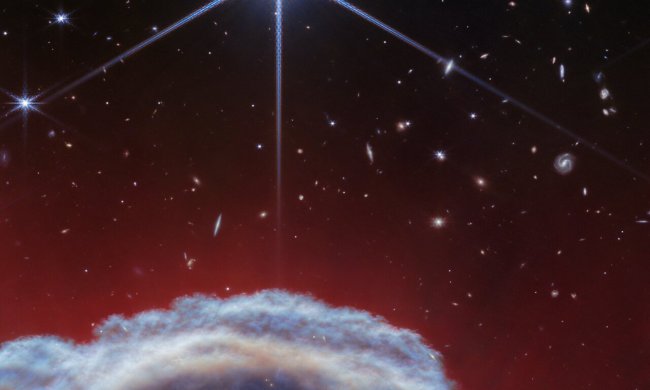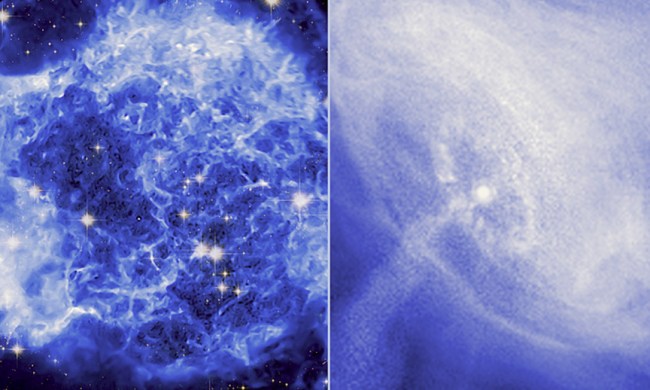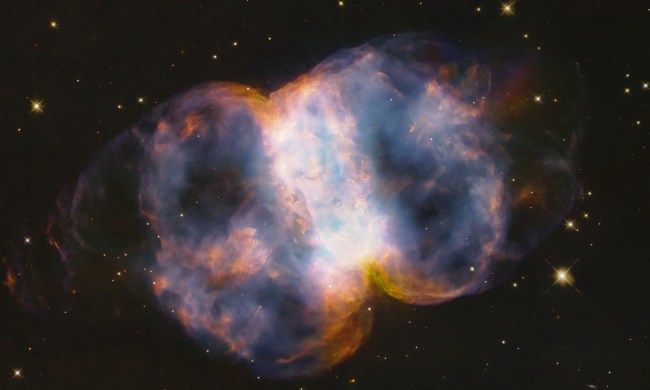A beautiful image of a distant nebula has been captured using the international Gemini Observatory, located in Chile. The image shows the Chamaeleon Infrared Nebula, a star-forming region that is one of the nearest to Earth in our galaxy.
This nebula is known as an infrared nebula because it glows brightly in the infrared wavelength, though this particular image was taken in the visible light wavelength. It is a reflection nebula, meaning that it is a cloud of dust and gas which is not itself ionized, but which reflects the light of a nearby star. The source of the wispy shape of the nebula is a young, cool star hidden by a dark band in the center of the image which is giving off streams of gas which creates tunnel shapes through the material, as well as giving off light which illuminates the nebula.

There are also two other objects of interest in the image. “The bright red object to the right of the image center marks where some of the fast-moving stream of gas lights up after colliding with slower-moving gas in the nebula,” NOIRLab writes. “It is known as a Herbig-Haro (HH) object and has the designation HH 909A. Other Herbig-Haro objects have been found along the axis of the star’s outflow beyond the edges of the image to the right and left.”
There are signs that there might be the very early stages of planet formation happening here as well. “Astronomers have suggested that the dark band at the center of the Chamaeleon Infrared Nebula is a circumstellar disk — a reservoir of gas and dust orbiting the star,” NOIRLab writes. “Circumstellar disks are typically associated with young stars and provide the materials needed to build planets. The reason the disk appears as a band rather than a circle in this image is that it is edge-on, only revealing one edge to observers here on Earth. Astronomers believe that the nebula’s central star is a young stellar object embedded within the disk.”



